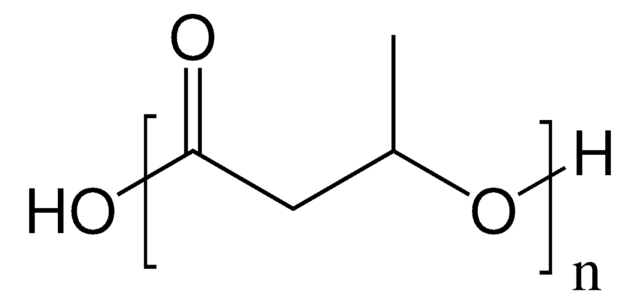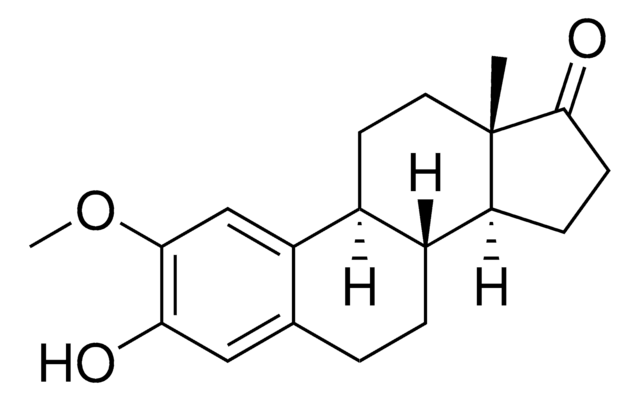Unfortunately, there is no molecular weight provided by the supplier for this product. The information is proprietary.
719846
Resomer® X 206 S, poly(dioxanone)
Sinônimo(s):
PDS
Selecione um tamanho
Selecione um tamanho
About This Item
Produtos recomendados
Formulário
solid
Nível de qualidade
prazo de degradação
<6 months
viscosidade inerente
1.5-2.2 dL/g, 0.1 % (w/v) in hexafluoroisopropanol(30 °C, Ubbelohde) (size 0c glass capillary viscometer)
temperatura de transição
Tg −10-−5 °C
Tm 110-115 °C
temperatura de armazenamento
−20°C
cadeia de caracteres SMILES
O1CCOC(=O)C1
InChI
1S/C4H6O3/c5-4-3-6-1-2-7-4/h1-3H2
chave InChI
VPVXHAANQNHFSF-UHFFFAOYSA-N
Categorias relacionadas
Descrição geral
Aplicação
Informações legais
Código de classe de armazenamento
11 - Combustible Solids
Classe de risco de água (WGK)
WGK 3
Ponto de fulgor (°F)
Not applicable
Ponto de fulgor (°C)
Not applicable
Escolha uma das versões mais recentes:
Já possui este produto?
Encontre a documentação dos produtos que você adquiriu recentemente na biblioteca de documentos.
Artigos
Main features of p-dioxanone, glycolide and lactide based copolymers
Interest in utilizing biodegradable polymers for biomedical applications has grown since the 1960s.
AliAliphatic polyesters, including polylactide and polyglycolide, are biodegradable polymers widely used in medical applications.
Immunosuppressive tumor-associated myeloid cells (TAMC) are responsible for glioblastoma (GBM) resistance to immunotherapies and existing standard of care treatments. This mini-review highlights recent progress in implementing nanotechnology in advancing TAMC-targeted therapies for GBM.
-
What's the molecular weight ?
1 answer-
Helpful?
-
Active Filters
Nossa equipe de cientistas tem experiência em todas as áreas de pesquisa, incluindo Life Sciences, ciência de materiais, síntese química, cromatografia, química analítica e muitas outras.
Entre em contato com a assistência técnica








